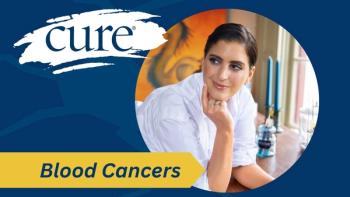
‘Time Toxicity’ and its Effect on Patients With Stage 4 Melanoma
The notion of ‘time toxicity’ causes patients with stage 4 melanoma to have less available time in their everyday lives because of appointments and treatments.
Patients with stage 4 melanoma experience more time toxicity, as they are expected to attend more in-person doctor visits for optimal survival, according to an expert.
Time toxicity, defined by Dr. Timothy Hanna, is an unintended effect in a person’s life, particularly with their time.
Hanna is a radiation oncologist and health services researcher at Queen’s University in Kingston, Ontario, Canada, who specializes in skin cancer treatments, and co-authored a study that was published on JAMA Network.
His research determined that patients with stage 4 melanoma experience more time toxicity because of the amount of time taken away from their everyday life to attend in-person appointments to receive procedures, such as biopsies and surgeries, and drug therapies and radiation.
“The time that (patients) could spend with family, fishing, going to restaurants and enjoying their everyday life is taken away from them to some degree because of the time burden and (doctor) visits that are required in order to gain these survival benefits from the treatments,” Hanna explained in an interview with CURE®.
Hanna and co-authors of the study found that patients with stage 4 melanoma were “spending more than one day per week on health care-related contacts.”
LEARN MORE:
“So that’s really important. I think (it’s) valuable information for people who are diagnosed with advanced stage 4 melanoma to know about,” said Hanna. “It’s nice to know that with these new drugs, the chances of living longer, is much better. So, there is this time investment, but thankfully, that time investment hasn’t really gotten any larger compared to how it used to be. So, for that same investment, we’re getting essentially a greater return because of the possibility of longer survival.”
Transcript:
New cancer treatments are often accompanied by many health care visits, you know, we need visits for imaging for seeing the specialist for blood tests. We need visits for medical procedures, like biopsies, surgeries, visits for these expensive new drug therapies, radiation and this can take up a lot of a person's time.
Now, if we're talking about a therapy where this is a lifesaving therapy and it's an earlier stage disease, investing a few months of your time, in order for your life to be saved, would always be worthwhile, you could say. But, when we start thinking about people with more advanced cancers, for example, those with stage 4 disease, such as stage 4 melanoma, in some cases, they may only have a few months or years to live. And so, when we start to think about the time burden that all of these visits placed upon them, this is something that is now called in by many people time toxicity, meaning that this is an unintended effect on a person's time that has, in the patient's perspective, often ill effects. So, the time that they could spend with family, fishing, going to restaurants and enjoying their everyday life, is taken away to some degree because of the time burden and the visits that are required in order to gain these survival benefits from the treatment.
So, what is called time toxicity doesn't specifically affect someone's survival, but it does impact the usefulness of the time that someone might have left. So, if you only had say, three months of life left and half of that was spent on the visits to hospital, those gains and survival from these new expensive drugs might not be, from the patient perspective, worth it. They might decide it's totally worth it. But the information that we can gather and describe for patients under this concept called time toxicity provides information that can help patients and their families decide on the value that they place on the benefits of treatment.
For more news on cancer updates, research and education, don’t forget to




